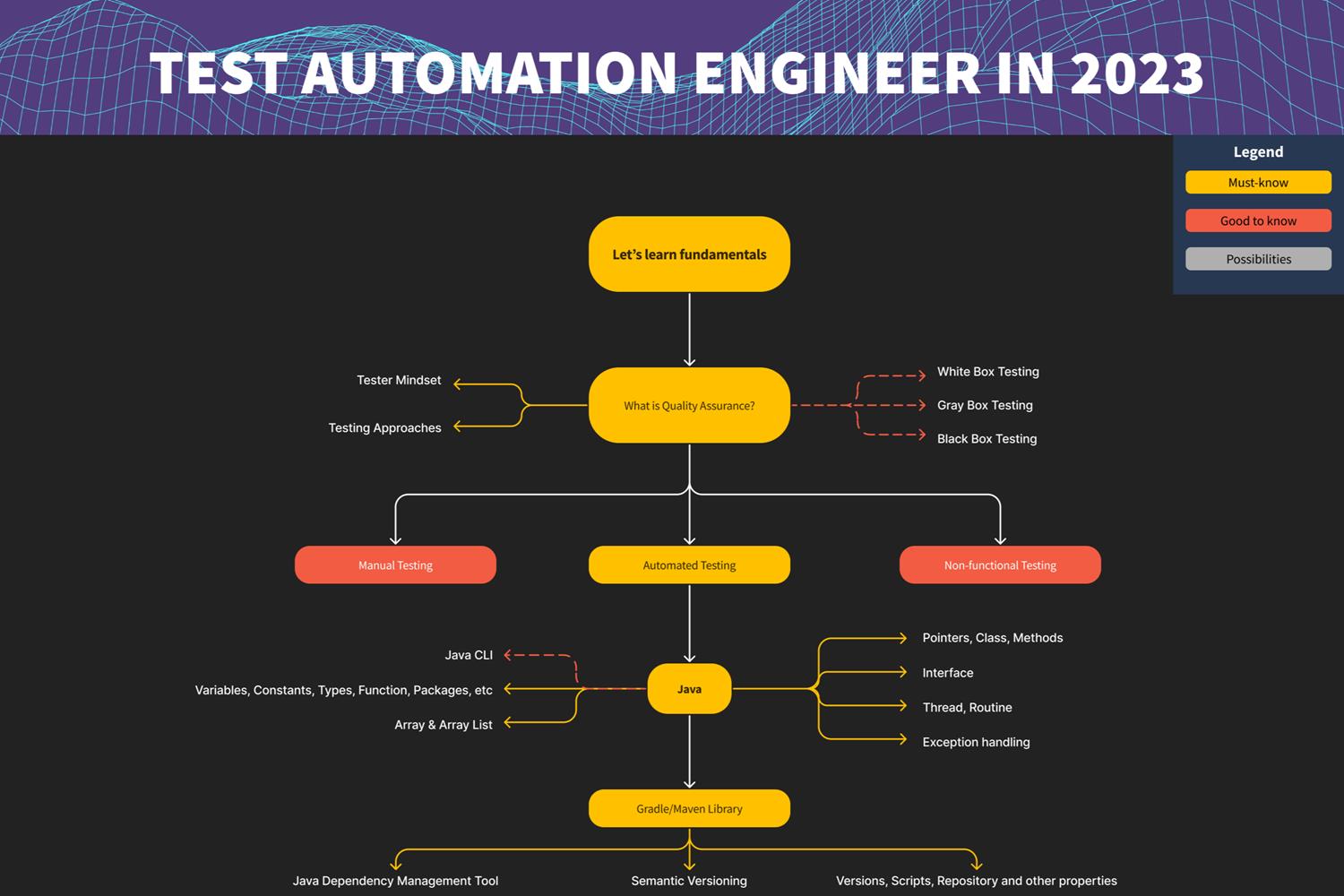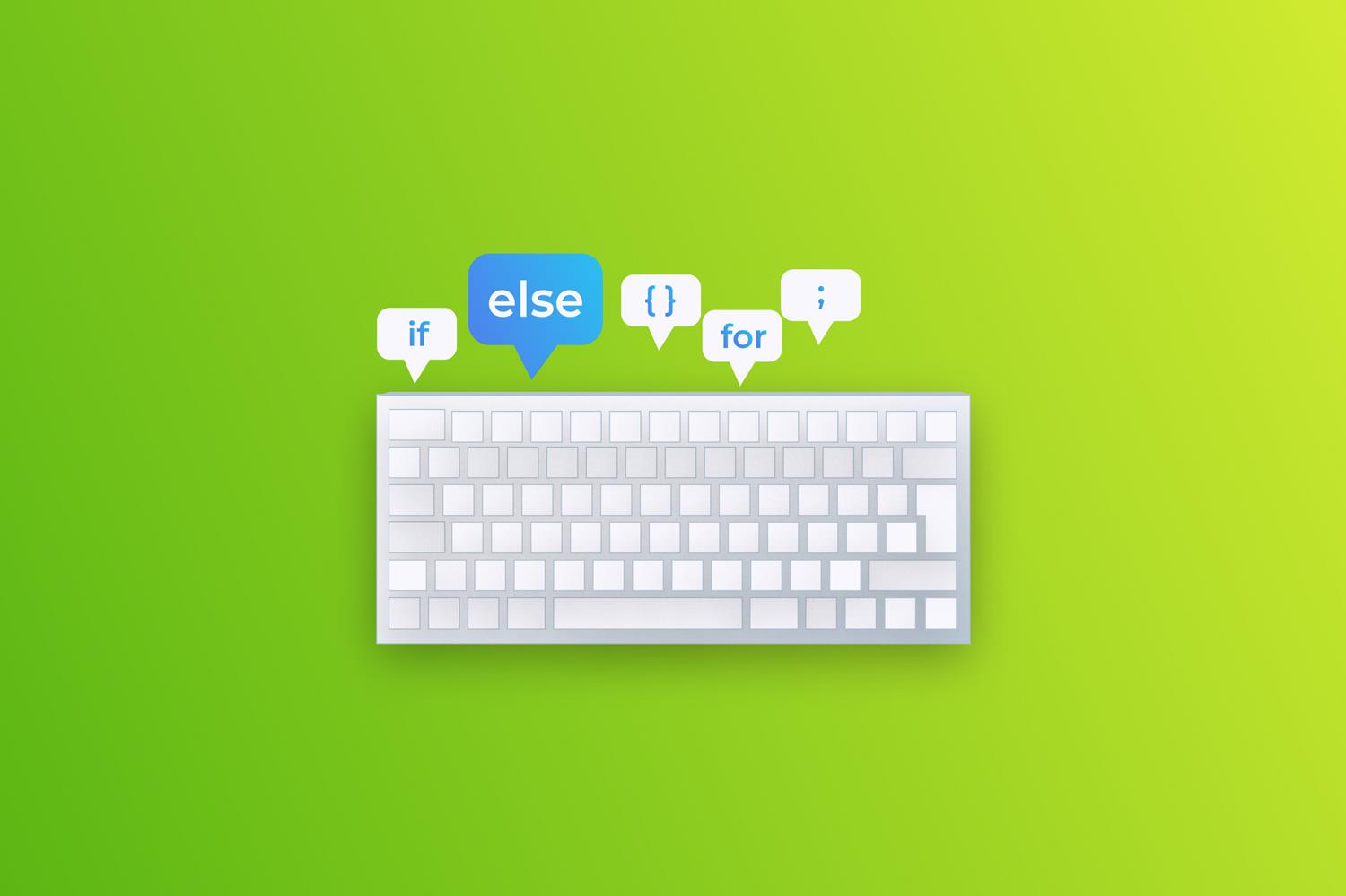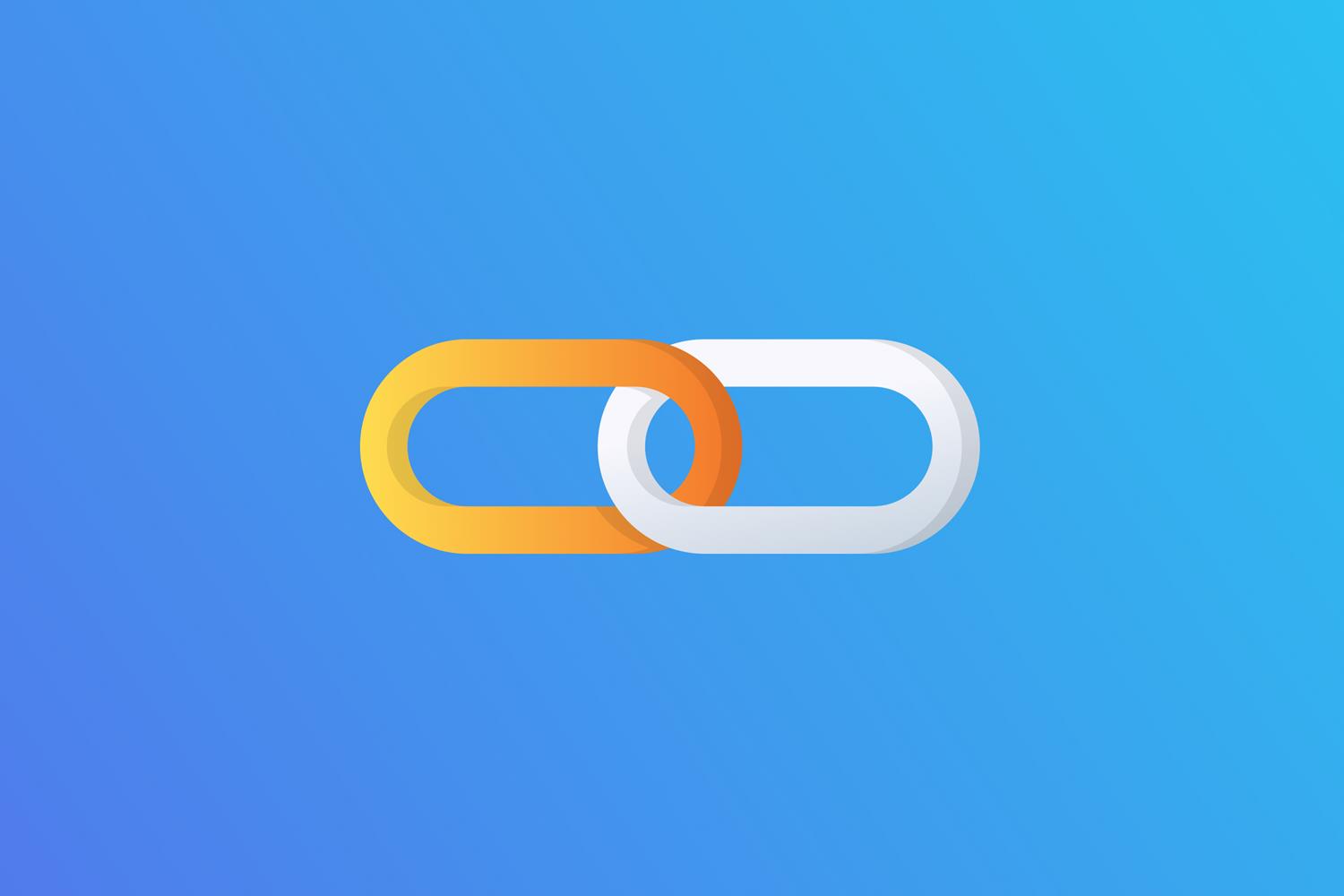It is a popular direction, but the abundance of programming languages for writing self-tests, frameworks, and libraries makes creating a study plan quite challenging. Of course, there is no silver bullet, so we suggest you heed the advice of our colleague Andrii Yaremenko, Lead Software Test Automation Engineer at EPAM.
First, take a look at the roadmap that will guide you through the first steps toward your goal.

To view and download the detailed scheme, follow the link.
Let's move on to self-training materials.
To become a tester, think like a tester to paraphrase a well-known adage. Tim Riley and Adam Goucher's book Beautiful Testing: Leading Professionals Reveal How They Improve Software will give you an insight into the thoughts and experiences of top QA professionals; through their stories, you'll gain a solid understanding of the fundamentals of the profession. The book is lightly written and includes practical examples to illustrate each concept.
Another book for beginners, The Way of the Web Tester: A Beginner's Guide to Automating Tests, will come in handy not only for future test automation engineers but also for developers: you will learn how to create reliable solutions and expand your knowledge of terminology and methods of coordinating the writing and organization of automated tests.
During training, referring to official sources is a must for software testing engineers, regardless of the work specifics:
- International Software Test Institute is a comprehensive resource for all things software testing, including descriptions of processes, metrics, risks, and other helpful information.
- ISTQB Foundation Level Syllabus: materials for preparing for ISTQB certification are an excellent source to help organize and solidify your knowledge.
- ISTQB glossary provides definitions for standard testing terms. There is no need to learn it by heart: bookmark the glossary and peruse it from time to time.
A test automation engineer must be proficient in one or more programming languages. If you're getting started with Java, as our roadmap suggests, check out these resources:
- Head First Java by Kathy Sierra and Bert Bates is an all-encompassing guide to Java and object-oriented programming. The book's engaging style, use of irony, and ample practical exercises create an effective mix for learning.
- You can eventually advance to Java: A Beginner’s Guide or Java: The Complete Reference, both by Herbert Schildt.
- Also, check out Alan Richardson's Java for Testers — as the name suggests, the book focuses on the specifics of using Java in testing.
When you begin learning Gradle and Maven, for starters, take Maven Quick Start: A Fast Introduction to Maven by Example course on Udemy and get acquainted with the more in-depth Maven: The Complete Reference. Take the Learning Gradle course on LinkedIn and then progress to Gradle Guides, the official documentation.
Remember that hands-on experience is crucial to learning. So be sure to practice on small projects or exercises. You can find many open-source projects on GitHub.
Don’t hang back if you feel it is time to put your knowledge into practice. Enroll in our educational programs to enhance your skills in this field and start your career with EPAM's automated testing educational programs.


_04142425.png)
_04172679.png)
_03572978.png)


_03400068.png)
